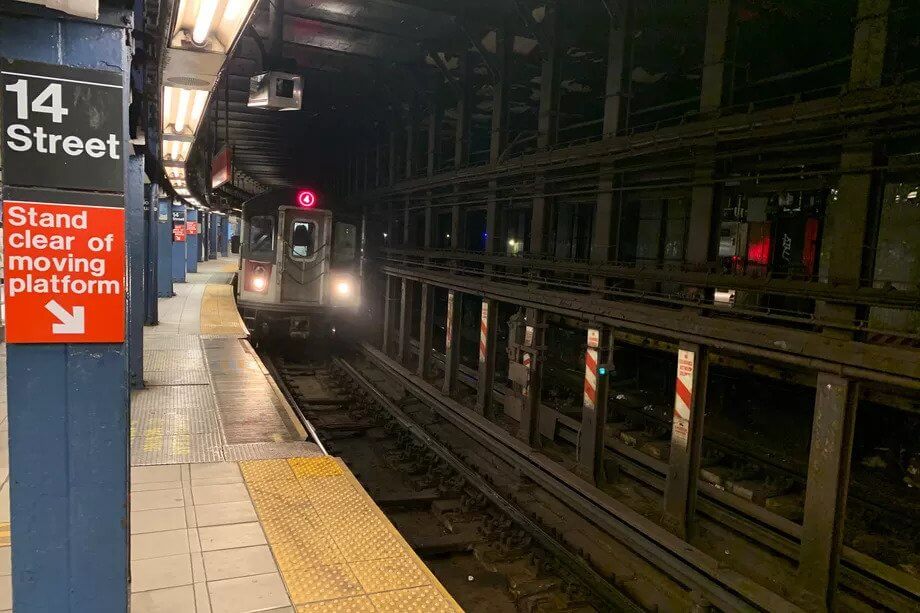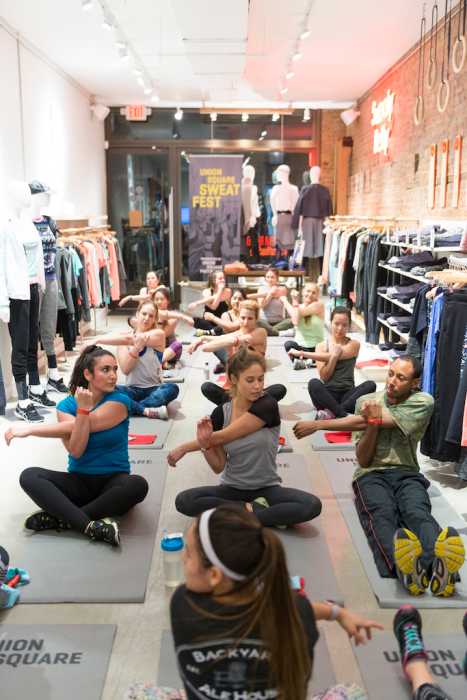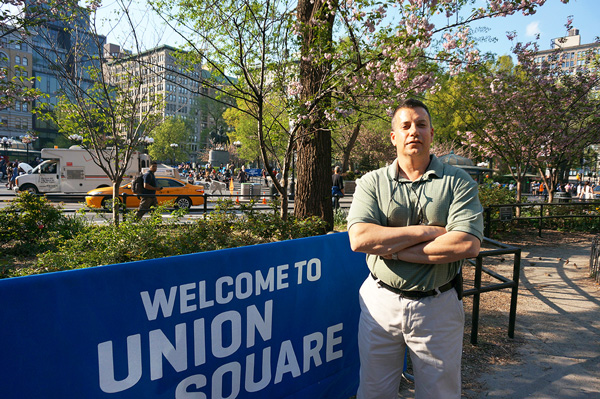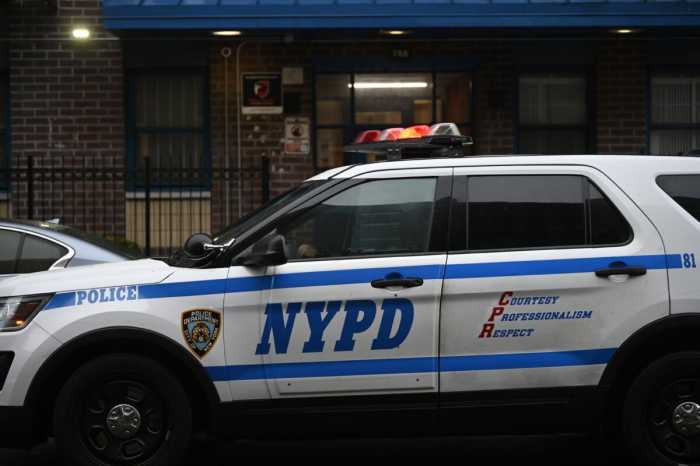By Jose Martinez, THE CITY
This article was originally published on by THE CITY
A proposed $100 million overhaul of Union Square lays out a blueprint for making one of the city’s best-known public spaces more pedestrian friendly.
But the new “Vision Plan” from the nonprofit organization that helps to beautify the city-owned green space also points to the limitations of making the sprawling subway complex beneath the park more accessible to riders with disabilities.
The platforms along the 4, 5 and 6 lines at the 14th Street-Union Square station lack elevators, and a MTA-commissioned study last year made it seem the stop would never be compliant with the Americans with Disabilities Act.
There is “no fully accessible solution at this time,” the February 2020 report concluded.
Meanwhile, the area is a veritable hub for New Yorkers with mobility issues.
“We’ve had people who have had to be carried out of the station by the Fire Department, we’ve had people have to crawl up the stairs,” said Susan Dooha, executive director of the Center for Independence of the Disabled New York — an advocacy organization whose offices are off Union Square Park.
“Imagine how you would feel about that.”
‘Most Accessible Place’
The Union Square-14th Street District Vision Plan calls for improving access to the subway station by adding elevators and escalators to an enlarged 16th Street entrance.
That’s among several proposed changes that could be funded over the next 10 to 20 years, which include expanding the park’s footprint, doubling sidewalk widths, making bigger bus boarding zones on 14th Street and adding street lighting.
The improvements would be part of the biggest renovations to Union Square Park since the mid-1980s, when a central lawn, lighting and two subway kiosks were added to the 6.5-acre space.
“One of the core goals of the Vision Plan is making Union Square-14th Street the most accessible place in New York, especially for people with disabilities,” a spokesperson for the Union Square Partnership, which is officially launching the plan Tuesday, said in a statement to THE CITY.
 Hiram Alejandro Durán/THE CITY
Hiram Alejandro Durán/THE CITYThe improvements, the spokesperson said, would benefit neighboring hospitals, senior citizens and visitors to Union Square, and be funded by a mixture of public and private sources.
But underground, the upgrades can only go so far.
As THE CITY reported last year, an MTA-commissioned study of how to bring the subway system in line with the Americans with Disabilities Act found that a “fully accessible solution” at the fourth-busiest station in the subway system remains out of reach. That’s largely because of the “extreme curvature” and moving gap fillers on the southbound platform of the 4, 5 and 6 lines at 14th Street-Union Square.
The subway complex — which does have elevators connecting to its platforms on the N, Q, R, W and L lines — was among the few stations in the first 100 to be surveyed where full accessibility was found to be unfeasible. About a quarter of the 472 stations in the subway system are fully accessible.
‘Engineering Smarts’ Wanted
Dooha said the vision plan raises “both some opportunities and some concerns.”
“The tremendous opportunity is to add to the accessibility of the station and I’d love to see details about adding to the accessibility of the station,” she said. “That would be incredibly useful.”
The MTA’s accessibility study, conducted by a Canadian engineering firm hired to explore how to make hundreds of non-accessible stations compliant with 30-year-old federal law, noted that adding elevators to the curved platform at 14th Street-Union Square would likely “require shutting down train service through the station.”
“The curves at Union Square present issues from a number of perspectives,” said Lisa Daglian, executive director of the Permanent Citizens Advisory Committee to the MTA. “They slow trains down, they can cause safety issues and they’re preventing accessibility to the station for those with disabilities.”
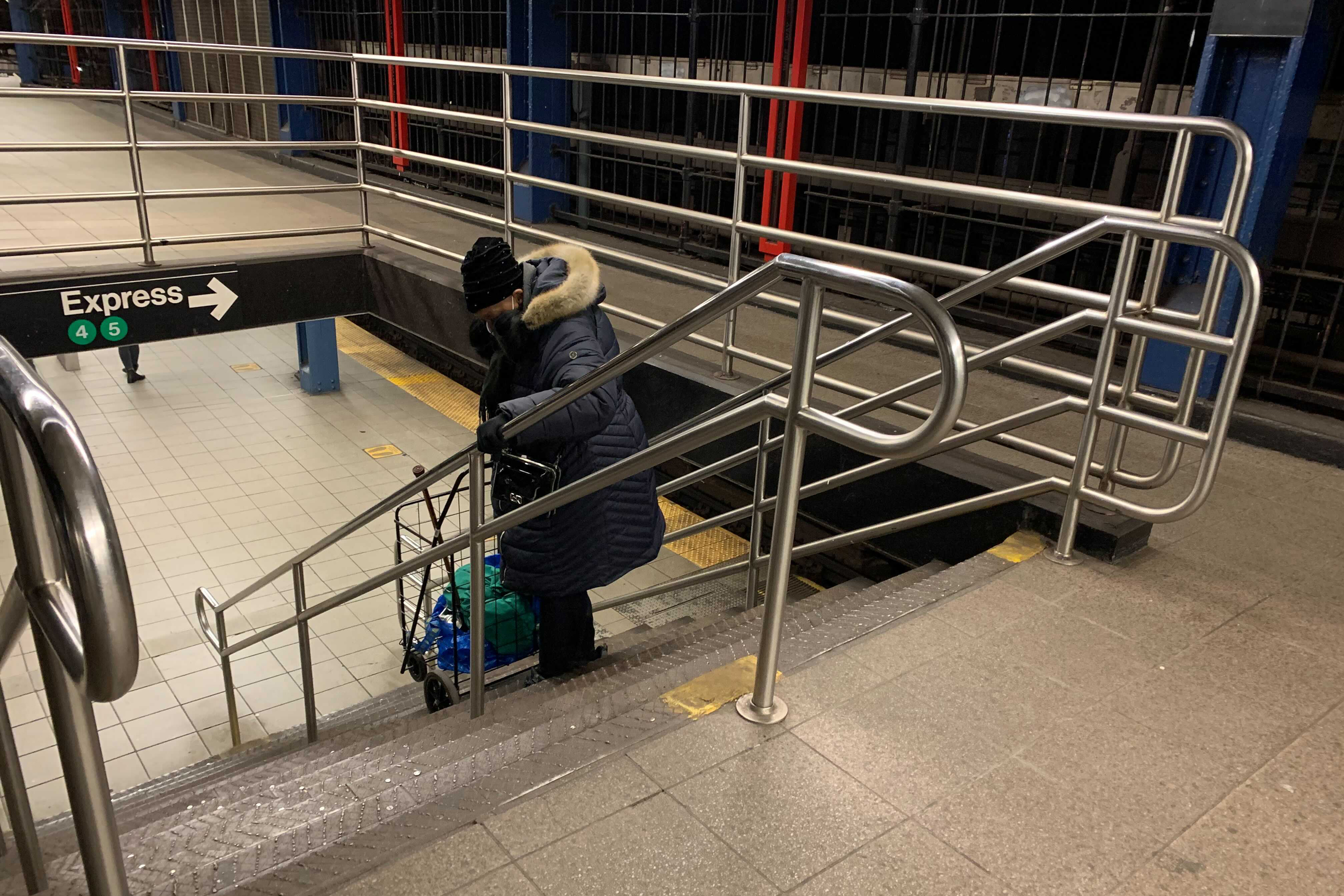 Jose Martinez/THE CITY
Jose Martinez/THE CITYOutside Mount Sinai Downtown hospital, Margie Ortiz said she usually opts for riding the MTA’s paratransit service to Union Square instead of taking the subway.
“When you have problems with your legs, an elevator would make all the difference,” said Ortiz, 58, as she waited for an Access-A-Ride van. “And there’s a lot of people around here who are handicapped.”
A 63-year-old woman who walks with the assistance of a cane pulled a shopping cart up the stairs from the southbound platform at 14th Street-Union Square.
“This station is why I want to move near one where I can use an elevator,” said the woman, who gave her name as Barbara E. “I don’t want to have to deal with this.”
Sarah Meyer, New York City Transit’s chief customer officer, recently responded to a question on Twitter about straightening the curved platform by saying she would ask MTA construction officials about the possibility of working alongside the Union Square Partnership to make station improvements.
“We look forward to discussing these synergies with our government partners as our plans move forward,” the Union Square Partnership spokesperson said.
Dooha said “it is within reach to do better” on improved accessibility to the subway hub, even as the financial fallout from pandemic has put the MTA’s next capital plan on hold.
“I would say there has to be a way to do this,” she said. “If it takes engineering smarts, then I think they should acquire that.”
THE CITY is an independent, nonprofit news outlet dedicated to hard-hitting reporting that serves the people of New York.



